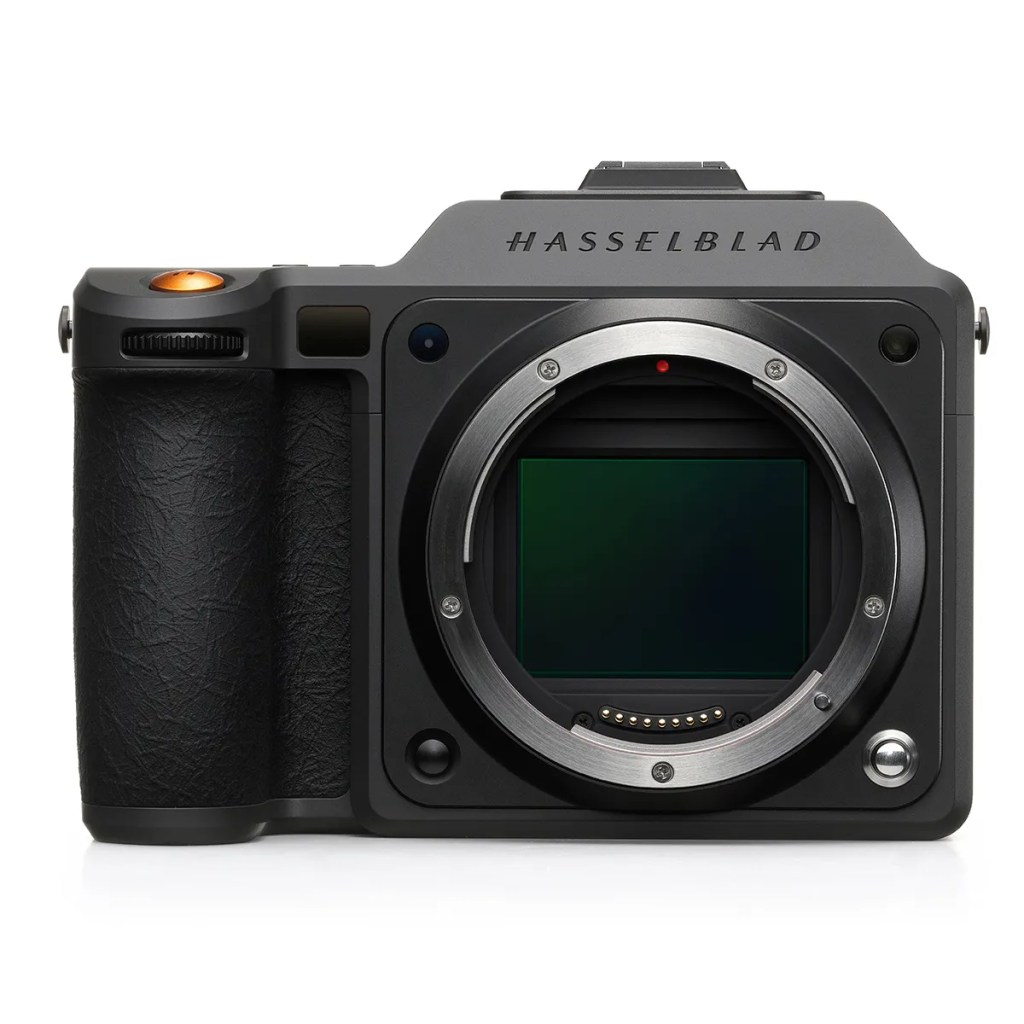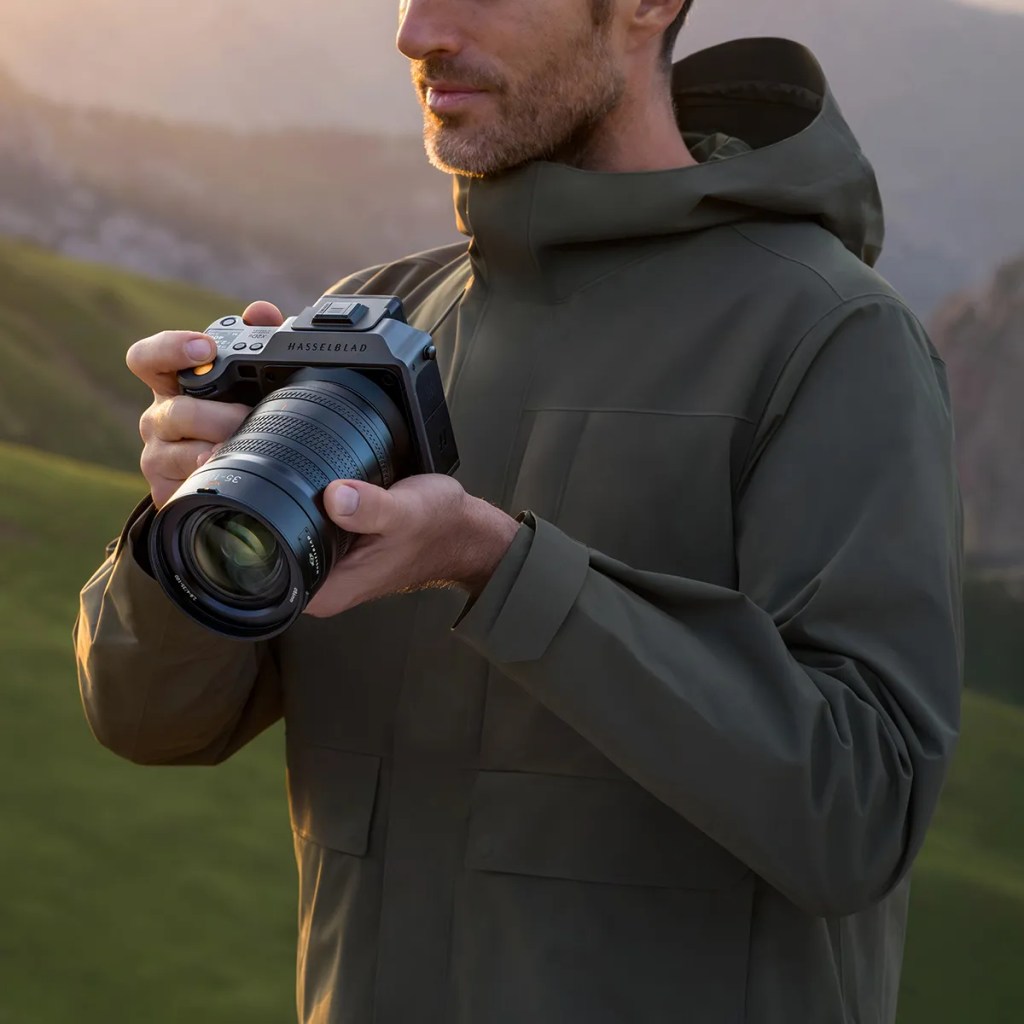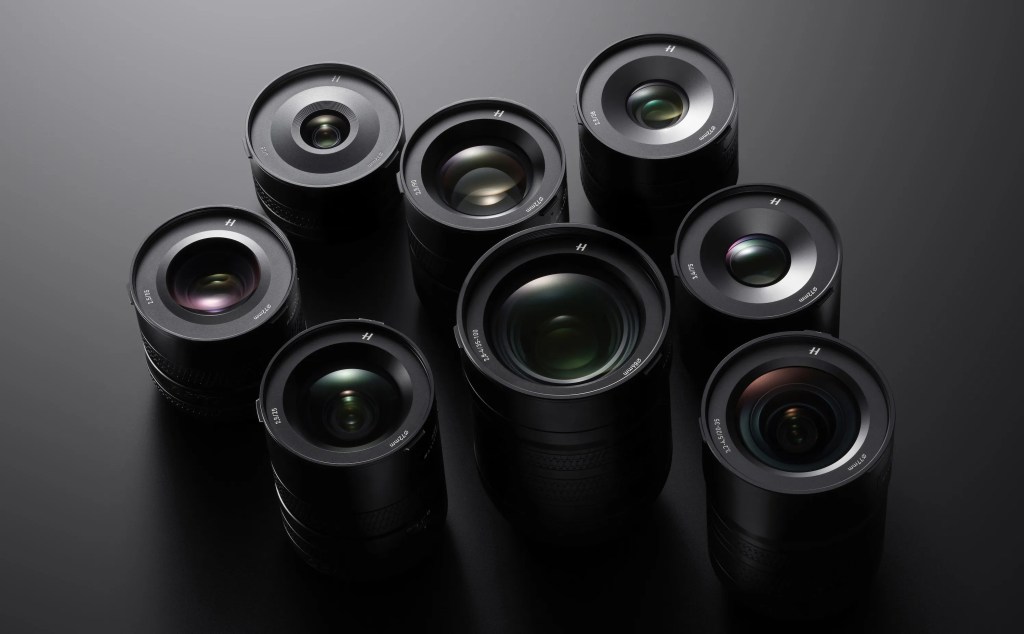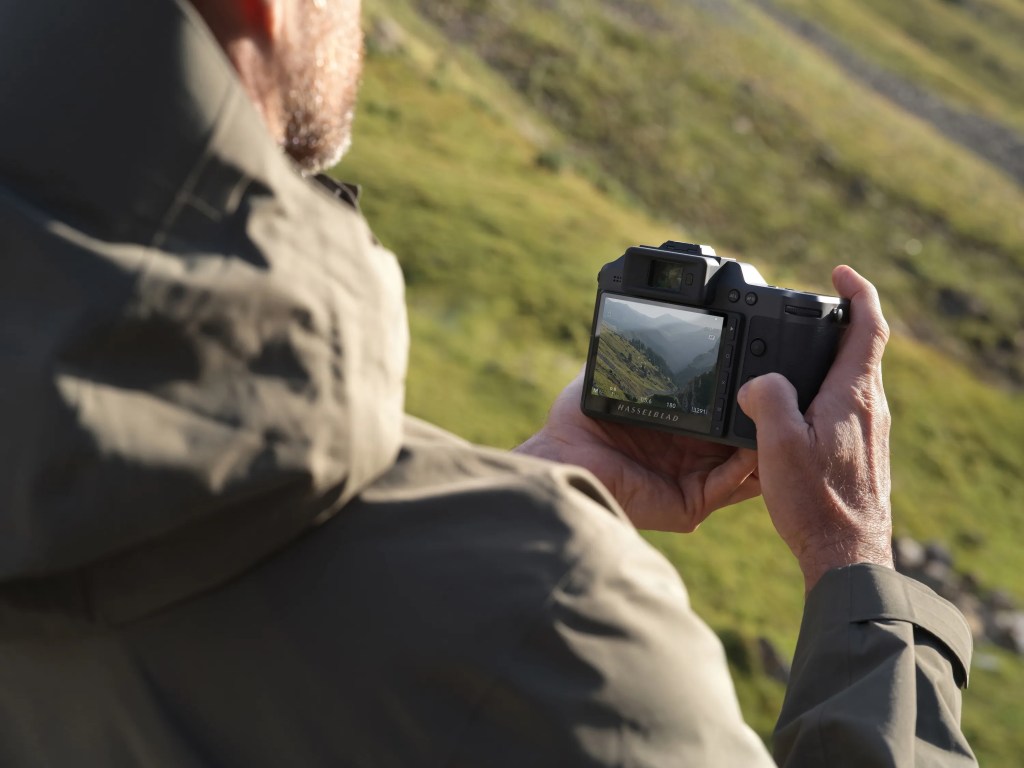Every once in a while, a camera comes along that makes photographers stop and take notice. The Hasselblad X2D II 100C Medium Format Mirrorless Camera is one of those. With its 100-megapixel medium-format sensor, 10-stop in-body image stabilization, and LiDAR-assisted autofocus, it pushes the boundaries of what’s possible in still photography.
Thank you for reading this post, don't forget to subscribe!I’ll be honest with you right from the start: I have never actually held a Hasselblad camera in my hands. My personal preference has always leaned toward Canon when it comes to photography gear, especially for bird and wildlife work. That said, the Hasselblad name has always carried a certain weight in the photography world, and the new Hasselblad X2D II 100C Medium Format Mirrorless Camera immediately caught my attention. It sounds like a truly remarkable piece of equipment, and after going through countless expert reviews, specifications, and user experiences, I wanted to dive deeper to see what makes it stand out.
This review is my honest take, based on careful research, designed to help you understand whether the X2D II might be a worthwhile option for bird and nature photographers.
Affiliate Disclosure
This article may contain affiliate links. If you purchase through these links, I may earn a small commission at no extra cost to you. This helps support gotobirding.com and allows me to continue bringing you honest reviews and guides.
The Hasselblad Legacy
Hasselblad has a legendary reputation in photography. From iconic NASA moon missions to high-end studio work, the brand is synonymous with uncompromising image quality. Their cameras have always been about more than just taking a picture — they’re about creating an image that’s as close to perfect as possible. For most photographers, Hasselblad has always seemed like a distant dream, largely because of the price and niche appeal. The X2D II is their attempt to bring medium format into a more modern, mirrorless, and (relatively) accessible package.
The Hasselblad X2D II 100C is the successor to the well-regarded X2D, and it continues the brand’s legacy of producing high-end medium format cameras that combine craftsmanship, cutting-edge technology, and exceptional image quality. Hasselblad has always been associated with professional studio and landscape photography, but with the X2D II, it brings portability and usability to a wider range of photographers.
This review is based on extensive research, professional opinions, and real-world impressions from users, not personal hands-on experience. My goal is to provide you with a clear, honest overview of what makes the X2D II unique, its advantages, its limitations, and whether it could be useful for nature and bird photography enthusiasts like those who read gotobirding.com.

Design and Handling
The X2D II continues Hasselblad’s tradition of minimalism and elegance. It looks and feels more like a finely crafted instrument than a typical camera. Reviewers often describe Hasselblad cameras as “luxury sports cars,” and that’s an apt comparison here.
The new graphite grey finish and redesigned grip make it more practical for extended fieldwork. Unlike many medium-format systems, the X2D II isn’t just for the studio—it’s designed to be portable and usable outdoors. The placement of the joystick, customizable buttons, and bright OLED touchscreen make operation intuitive, even in direct sunlight.
For birders who may spend long hours in changing light conditions, these details matter. The HDR screen is particularly useful when reviewing images with both dark shaded branches and bright skies—something bird photographers encounter constantly.

Image Quality
This is where the Hasselblad X2D II 100C shines brightest.
- Resolution: At 100 megapixels, the level of detail is extraordinary. Every feather barb, subtle gradation in plumage, or reflection in an eye is rendered with clarity that smaller sensors simply cannot match.
- Dynamic Range: The camera excels in high-contrast situations. Birds perched in trees with sunlight streaming through leaves are captured without crushed shadows or blown highlights.
- Color Science: Hasselblad is legendary for its natural color reproduction. Greens, browns, and blues look lifelike yet painterly—ideal for bird photography where subtle hues matter.
This level of quality is overkill for casual snapshots, but for birders who print large, crop heavily, or want gallery-worthy work, it’s hard to beat.
Autofocus and Tracking
One of the most significant improvements over the original X2D is autofocus. The hybrid PDAF + CDAF system with LiDAR assistance makes focusing much faster and more reliable. Subject detection now includes animals, which can help with bird photography.
That said, there are limitations. The X2D II is not a sports camera. Its continuous autofocus and burst rates can’t compete with cameras like the Canon EOS R3 or Nikon Z9. Fast birds in flight will remain a challenge.
However, for perched birds, slower movement, or deliberate composition, the AF system is accurate and precise. Combined with the 10-stop IBIS, this means handheld shots at slower shutter speeds are possible—something incredibly valuable in low-light forest conditions.

Stabilization
The 10 stops of IBIS may be one of the most important features for birders. Carrying a tripod into the field isn’t always practical, especially if you’re hiking long distances or reacting quickly to bird movements.
With the X2D II, you can shoot handheld at slower shutter speeds without sacrificing sharpness. This opens creative possibilities in dawn or dusk light, when birds are most active. It also helps keep ISO lower, preserving image quality.
Storage and Workflow
The built-in 1TB SSD is another thoughtful feature. Bird photographers often shoot thousands of frames in a session, and the internal SSD means you won’t run out of space mid-hike. For backup, there’s also a CFexpress Type B slot.
The HDR workflow integration—from capture to display—makes it easier to manage high-contrast scenes, giving you more flexibility in post-processing.
Lenses and System
Hasselblad’s XCD lens lineup is growing, but still more limited (and pricier) compared to Canon RF or Sony E systems. Available options range from wide-angle to telephoto, though serious birders will notice the lack of super-telephoto native lenses. The 135mm lens with a teleconverter is currently the longest option, which is not ideal for distant wildlife.
This makes the X2D II better suited to closer encounters, hides, or slower subjects rather than fast raptors or shorebirds far across a lagoon.

Limitations for Bird Photography
It’s important to be honest: the Hasselblad X2D II 100C is not designed with bird photography in mind, and several limitations make it less practical than full-frame or APS-C systems built for speed and reach.
Speed
The X2D II is not an action camera. Its continuous shooting rate is modest compared to cameras like the Canon EOS R5 Mark II, Nikon Z9, or Sony A9 III, which can capture bursts of fast-moving subjects with ease. Bird flight—whether it’s swallows darting, raptors diving, or flocks taking off—demands quick frame rates and deep buffers. With the Hasselblad, you’ll need to rely more on timing, patience, and anticipation rather than machine-gun bursts.
No Video
Many modern birders and wildlife photographers like to capture video alongside stills—sometimes for documenting rare species, other times for producing short films. The X2D II offers no video functionality at all, which feels limiting in 2025 when nearly every high-end camera provides at least 4K, and often 6K or 8K. If hybrid shooting is part of your birding routine, this camera simply won’t deliver.
Price
At over $8,000 for the body alone, the X2D II 100C sits in a rarefied price bracket. Add the cost of Hasselblad’s XCD lenses, and you’re easily well into five figures for a working bird photography setup. For most hobbyists, this will feel out of reach—especially when alternatives like the Canon EOS R7 or Nikon Z8 deliver excellent birding performance at a fraction of the cost. The X2D II is really aimed at fine art, studio, and landscape professionals, not budget-conscious birders.
Lens Ecosystem
Perhaps the most restrictive factor is the lens lineup. Hasselblad’s XCD system is elegant, but limited, especially when it comes to long telephoto options that birders rely on. Canon RF, Nikon Z, and Sony E all have extensive super-telephoto ranges—from lightweight 100–400mm zooms to 400mm f/2.8 and 600mm f/4 primes. In contrast, Hasselblad’s longest current options are far shorter, meaning birders would need to crop heavily into the 100MP files. While the resolution allows some flexibility, it’s no substitute for having a native 500mm or 600mm lens.
Verdict on Limitations
For birders, the X2D II is more of a luxury or niche creative tool rather than a practical field camera. Its strengths lie in capturing fine detail, beautiful tones, and contemplative stills rather than fast action. If you’re hoping to document every flap of a hummingbird’s wings or record crisp 4K video of a rare migration, this isn’t the right tool. But if your goal is to create painterly, fine-art bird portraits with breathtaking resolution, it offers a unique experience—albeit with compromises.
Who Is It For?
The Hasselblad X2D II 100C is best suited for:
- Birders who value ultimate image quality over speed—those who want to capture still, perched birds or environmental portraits in stunning detail.
- Fine art photographers who want to create large prints of bird and wildlife subjects.
- Nature enthusiasts who already own a fast action camera but want a medium-format system for deliberate, high-quality stills.
It is not ideal for:
- Birders who prioritize birds in flight or fast action.
- Those who need hybrid photo/video capability.
- Anyone on a budget looking for an all-around birding solution.

Specifications Table
| Feature | Hasselblad X2D II 100C |
|---|---|
| Sensor | 100MP Medium Format BSI CMOS |
| Resolution | 11656 x 8742 |
| ISO Range | 64–25,600 |
| Autofocus | Phase Detection AF |
| Burst Speed | 3.3 fps |
| Image Stabilization | 5-axis IBIS (up to 7 stops) |
| Viewfinder | 5.76M-dot OLED EVF |
| LCD | 3.6-inch tilting touchscreen |
| Storage | 1TB internal SSD + CFexpress Type B |
| Weight | 895g (1.97 lbs, body only) |
| Battery Life | ~420 shots |
Comparisons with Alternatives
When considering the Hasselblad X2D II 100C, it’s only fair to look at what else is available on the market. Medium format systems aren’t for everyone, especially if your main focus is birding or wildlife photography. Here’s how the X2D II stacks up against some of the closest rivals:
Fujifilm GFX100 II
Fujifilm’s flagship medium format, the GFX100 II, is the most direct competitor to Hasselblad. It also features a 100MP medium format sensor but brings more versatility to the table with 8K video, faster continuous shooting, and advanced autofocus. For hybrid shooters who balance stills and video, or who need speed in addition to resolution, the GFX100 II may be a more practical choice. However, the Hasselblad still wins when it comes to sheer elegance, simplicity of use, and the famed “Hasselblad color science,” which many describe as more natural and painterly compared to Fujifilm’s punchier tones.
Canon EOS R5 / R5 Mark II
Canon’s R5 and the newer R5 Mark II deliver between 45MP and 61MP depending on the model. While their sensors don’t reach the detail levels of medium format, these cameras excel in action scenarios thanks to blazing-fast autofocus, high burst rates, and exceptional lens ecosystems. For bird photographers, the Canon system is arguably more practical: lighter bodies, long telephoto lenses, and superb subject tracking. However, what you gain in practicality, you lose in the unique rendering and depth offered by medium format.
Read the full review –
Nikon Z9 / Z8
Nikon’s Z9 and Z8 are action powerhouses, featuring stacked full-frame sensors in the 20–45MP range, with robust video capabilities and industry-leading autofocus. These cameras are designed with wildlife and sports shooters in mind, offering reliability, long telephoto lens options, and speed. For birding specifically, Nikon provides a very balanced system, and in terms of usability, these cameras will outperform the Hasselblad in nearly every fast-paced scenario. Still, if your passion leans more toward high-detail landscape shots or artistic bird portraits, the Hasselblad holds its own in a very different way.
Read the full review – The Nikon Z8: A Mirrorless Marvel Called ‘Baby Z9’
Sony A1 / A9 III
Sony’s flagship A1 and the newer A9 III are considered the “speed demons” of the camera world. With lightning-fast autofocus, blackout-free shooting, and cutting-edge video, these cameras are built for professionals who demand speed and flexibility. Their resolution sits between 24MP and 50MP depending on the model, which is excellent for most bird and wildlife needs, but again, they cannot replicate the “medium-format look.” If you value action, versatility, and a massive lens lineup, Sony may be the better choice. But if your priority is rendering quality, subtle tonal transitions, and images with almost film-like depth, Hasselblad is still in a class of its own.
Read the full review – The New Sony A9 III – Game-changing Experience For Wildlife Photographers
Pros and Cons of Hasselblad X2D II 100C
Pros
- Exceptional 100MP image quality and dynamic range
- Legendary Hasselblad color science
- 10-stop IBIS—handheld low-light birding possible
- LiDAR-assisted AF with animal detection
- Built-in 1TB SSD + HDR workflow
- Elegant, ergonomic design
Cons
- Very expensive
- Limited burst rate and AF speed
- No video recording
- Small lens ecosystem for birding
- Not suited for fast action or flight shots
Final Thoughts
The Hasselblad X2D II 100C is not the obvious choice for bird photographers—but it is an inspiring one. If your goal is to capture birds with the highest possible fidelity, this camera will reward you with images that stand apart. The ability to render every feather with lifelike texture, combined with superb stabilization and natural colors, makes it a compelling tool for slow, deliberate bird photography.
As someone who usually shoots Canon and values speed, reach, and versatility in bird photography, I wouldn’t switch to the Hasselblad X2D II as my main camera. But I can’t deny that it’s one of the most fascinating cameras I’ve researched. Its image quality is unmatched, its design is inspiring, and for the right kind of photographer, it could be a dream machine.
For most bird and wildlife photographers, it’s probably not the most practical choice. But if you’re drawn to the artistry of photography, want medium format quality in a portable body, and don’t mind its slower pace, the Hasselblad X2D II 100C offers something truly unique.
It is not for everyone. The price, the lack of video, and the modest speed will push many birders toward Canon, Nikon, or Sony systems. But for those who can afford it, and who value image quality above all else, the X2D II is a dream machine.
Q&A – Hasselblad X2D II 100C for Bird and Nature Enthusiasts
Q: Is the Hasselblad X2D II 100C good for bird photography?
A: Honestly, it’s not designed specifically for bird or wildlife photography. Hasselblad cameras excel at landscapes, portraits, and fine art thanks to their medium format sensor and exceptional color science. For fast action like birds in flight, Canon EOS R5, R6 Mark II, or Nikon Z8 are more practical choices.
Q: What makes the Hasselblad X2D II 100C so special?
A: Its 100-megapixel medium format sensor delivers an amazing level of detail and dynamic range. Colors come out rich and natural, making it a dream for landscape or artistic nature photography where detail and tonality matter more than speed.
Q: Could a birder still use it in the field?
A: Yes, but with limitations. It’s heavier than a mirrorless full-frame, has slower autofocus, and the lens options aren’t as long as birders usually need. That said, if someone wants to capture breathtaking habitat shots or detailed stills of perched birds, it can deliver stunning results.
Q: How does it compare to Canon or Nikon for outdoor photography?
A: Canon and Nikon mirrorless cameras are faster, lighter, and better equipped for wildlife action. Hasselblad is more of an artist’s tool—slower but incredibly precise. It’s like comparing a race car to a luxury touring car; both are amazing, but they serve different purposes.
Q: Is it worth the price?
A: For most birders, probably not. Unless someone is doing high-end fine art prints or commercial nature photography, the cost is hard to justify. But for those who want the absolute pinnacle of image quality and artistic expression, the X2D II 100C is worth every penny.
Q: Who should buy the Hasselblad X2D II 100C?
A: Landscape photographers, fine art creators, and those who print their work very large. For birders, it’s more of a niche tool—better as a complement to a Canon/Nikon/Sony wildlife setup rather than a replacement.

